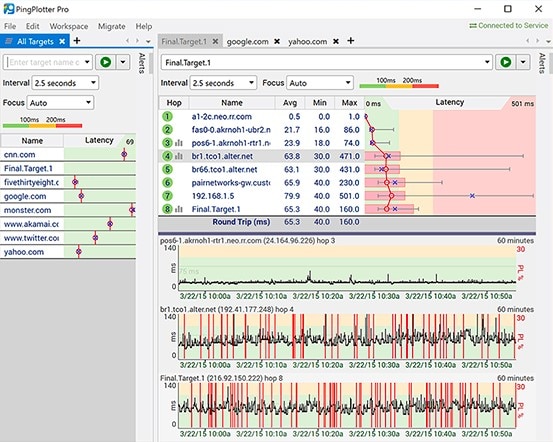
I make a note of the URL ( ) and take that to my VisualPing home page.

This is great for the moment, but what is the page going to look like a week from now? VisualPing will help me with that. And when I do I’m left with a page that looks like this: I can even sort the results by the newest projects. I can go to Kickstarter and do a search for the word archive. Kickstarter, wasn’t it? Looking for Kicky New Archives VisualPing is much more advanced than that and it’s much easier to precisely monitor a page (and get a lot of data – VisualPing specifies page changes down to the pixel count.)īack to the example. Back then you might have had to weigh whether a page monitor was going to be worth the trouble as it might provide far too many “false positives” that you would waste your time reviewing. At the time they were less sophisticated, and even if they were sophisticated, you had to do a lot of work to make sure they found just the kind of page changes you wanted.
Visual ping tool software#
I’ll be getting into how VisualPing works in a moment, but I wanted to show this screen shot first for you longtime readers who might have tried page monitoring software and services 10 to 15 years ago. And that’s why if you logged into my account and looked at my home page you’d find things a bit overwhelming. I’ve had a VisualPing account for – uh – a couple of years now.
Visual ping tool archive#
There’s a project for creating Kickstarter RSS feeds ( ) and there’s a site devoted to tracking Kickstarter projects ( ) and that has RSS feeds, but I wasn’t aware of those projects when I decided I really needed to monitor Kickstarter for news on archive and database projects. Kickstarter has no native RSS feeds that I can find. I review the screen shot and if it looks useful I visit the site.įor this article we’re going to use Kickstarter as an example. VisualPing visits the site, checks to see if a change has been made, and if a change has been made VisualPing takes a screen shot and e-mails it to me. That’s why I use VisualPing to do it for me. I don’t have time to periodically visit these Web sites. There are a number of Web sites - colleges and universities, organizations, etc - that I want to watch that don’t have useful RSS feeds or mailing lists.

You might also think that all Web sites have some kind of mechanism for alerting you to changes.

You might think that all major Web sites have RSS feeds. This is not a paid advertisement or endorsement I just like VisualPing. (USUAL DISCLAIMER: I pay VisualPing for its services. In this article I’m going to walk you through how VisualPing works and give you an example of how I use it.
Visual ping tool windows#
There are a number of different page monitoring services available - there’s even Windows software (WebSite Watcher is still going strong!) The one I like to use to keep up with page changes is a service called VisualPing, which is available at . A Web page monitor is just what it sounds like - a service or software package that watches a Web page for any changes (usually there are options for how it detects changes) and then informs you when there are. In that case you’ll want to use a Web page monitor. But sometimes you want to follow a site or page that doesn’t have an RSS feed. Yes, I’ve been ranting about RSS feeds for a while and how essential they are for keeping up with Web sites.


 0 kommentar(er)
0 kommentar(er)
